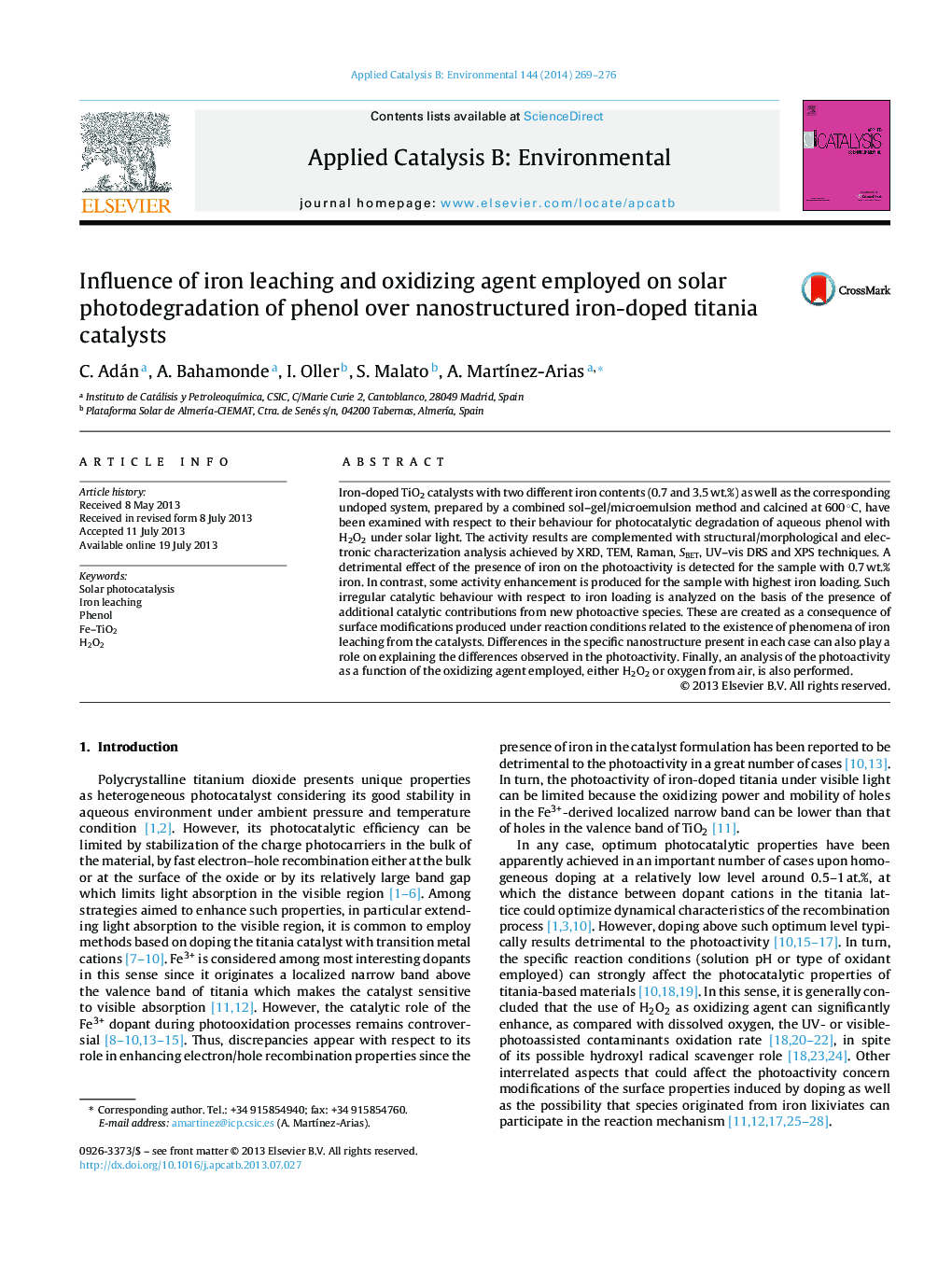| Article ID | Journal | Published Year | Pages | File Type |
|---|---|---|---|---|
| 45360 | Applied Catalysis B: Environmental | 2014 | 8 Pages |
•Structure/activity relationships over nanostructured iron-doped titania photocatalysts for solar degradation of phenol.•Iron leaching shown to be most relevant for the photoactivity.•Results compared in terms of the oxidizing agent, either H2O2 or oxygen from air.
Iron-doped TiO2 catalysts with two different iron contents (0.7 and 3.5 wt.%) as well as the corresponding undoped system, prepared by a combined sol–gel/microemulsion method and calcined at 600 °C, have been examined with respect to their behaviour for photocatalytic degradation of aqueous phenol with H2O2 under solar light. The activity results are complemented with structural/morphological and electronic characterization analysis achieved by XRD, TEM, Raman, SBET, UV–vis DRS and XPS techniques. A detrimental effect of the presence of iron on the photoactivity is detected for the sample with 0.7 wt.% iron. In contrast, some activity enhancement is produced for the sample with highest iron loading. Such irregular catalytic behaviour with respect to iron loading is analyzed on the basis of the presence of additional catalytic contributions from new photoactive species. These are created as a consequence of surface modifications produced under reaction conditions related to the existence of phenomena of iron leaching from the catalysts. Differences in the specific nanostructure present in each case can also play a role on explaining the differences observed in the photoactivity. Finally, an analysis of the photoactivity as a function of the oxidizing agent employed, either H2O2 or oxygen from air, is also performed.
Graphical abstractFigure optionsDownload full-size imageDownload as PowerPoint slide
